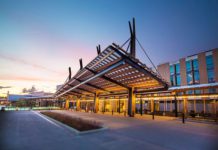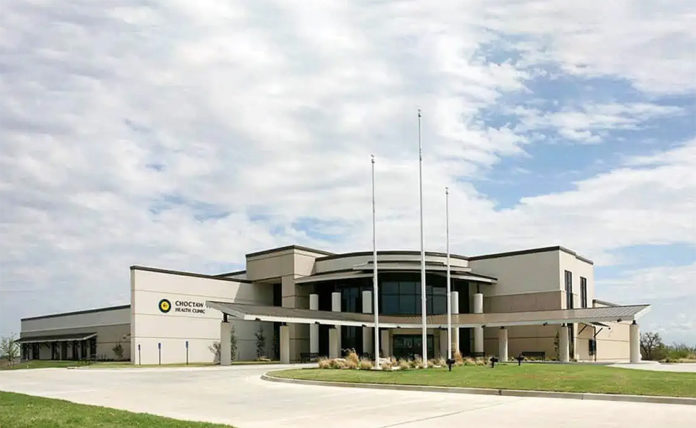MCALESTER, OK – The Choctaw Nation Health Clinic in McAlester will be remodeled and expand in size and services. Construction is scheduled to begin this fall and is estimated to be completed in 2024. The expansion will more than double the size of the clinic’s square footage and provide services not currently offered.
“The expansion is long overdue for this area,” said Robert Karr, District 11 Choctaw Nation Tribal Council Member. “Yakoke (thank you) to the clinic administration and staff for the quality care they’ve provided to tribal members while dealing with the capacity issues.”
The funding for the project is estimated at just short of $70 million and will use funds from the American Rescue Plan Act (ARPA).
“This investment will increase critical health care capacity for the Choctaw Nation, to better prepare it to respond to and mitigate additional healthcare demand caused by COVID-19,” said Karr.
The additional space will add over 51,000 sq. ft. to the clinic. Once complete, the current space will be updated. The expansion will give more space to current departments including family practice, internal medicine, same-day clinic, pediatrics, podiatry, behavioral health, laboratory, radiology, and pharmacy services. Upon completion, the clinic will be able to offer new services such as gastroenterology, cardiology, otolaryngology (ear, nose and throat), endocrinology, orthopedics, employee health clinic and speech therapy.
“We are excited to bring more health care options to our patients,” said Tiffany Segotta, Clinic Operations Director. “Some of our patients drive long distances to see us. Being able to offer these services in McAlester will bring a greater level of health overall for our patients.”
The increase in services will require almost doubling the associates as well, adding 56 new employees to the clinic. Upon completion, the clinic will be able to see 65 percent more patients.
“This opens the doors for providers to work and patients to get help that we currently don’t have,” said Segotta.













































